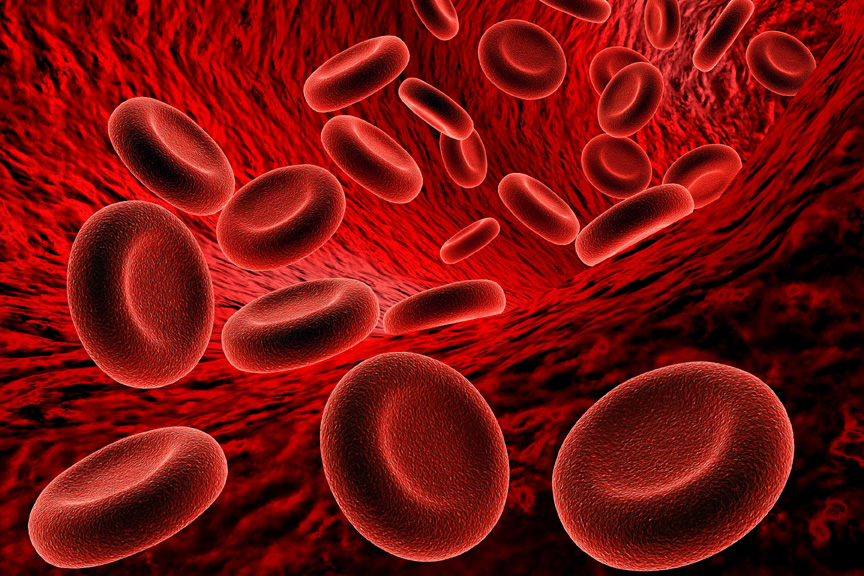Could You be Suffering from Anemia?

When people think of anemia they typically think of menstruating females, or athletes. However, there can be other causes of anemia and it’s important to identify the symptoms and understand treatment.
The 10 Most Prevalent Symptoms of Anemia
- Fatigue
- Weakness
- Pale skin
- Chest pain, fast heartbeat or shortness of breath
- Headache, dizziness or lightheadedness
- Cold hands and feet
- Inflammation or soreness of your tongue
- Brittle nails
- Depression
- Hair loss
Anemia is Defined as a Low Red Blood Cell Count, However There are 6 Main Types of Anemia
- Aplastic anemia
- Iron deficiency anemia
- Low ferritin or pre-anemia
- Sickle cell anemia
- Thalassemia
- Vitamin deficiency anemia
Although anemia is common; more than 3 million cases per year, these symptoms are also prevalent in other conditions such as Hypothyroidism, Hypoglycemia, Vitamin D deficiency, and Adrenal Insufficiency. I utilize comprehensive blood testing to rule out anemia which include:
- Complete Blood Count (CBC) with differential
- Iron and TIBC
- Ferritin
- B12/Folate
I will often add on Vitamin D3 and Thyroid Stimulating Hormone (TSH). Although this may seem strange to look at thyroid function and Vitamin D3, it just so happens that hypothyroidism is a common cause of anemia. Vitamin D also plays a role in iron status and is common to be low in those with anemia. If a patient has a significant history that involves digestive issues I will also order a comprehensive digestive stool analysis to ensure anemia is not caused by parasites, microscopic blood loss in the gut, or malabsorption from IBS.
The most common type of anemia in my practice is low ferritin or pre-anemia/sports anemia. Many patients come in and say, “I am tired and I went to my regular doctor who told me I did not have anemia”. When they show me their labs they have a normal CBC and serum Iron. How can this be? If you take iron supplements, then serum iron will be normal most of the time unless the RBC count is very low. I tell my patients to think of red blood cell counts, serum iron and ferritin like a new car: your CBC and iron are like the body of a car fresh out of the factory, new, perfect shape and red paint job. This car looks ready to go and perfect on the outside. However, open the hood of the car to make sure there’s an engine in it! This would be the ferritin. Ferritin is the protein that binds and stores iron for when the body is moving and needs gas.
Ferritin ranges from 12-150 in most labs. Does this mean that if your ferritin is 12 or even 20, that you don’t have anemia? NO! A ferritin of 15 is diagnostic of anemia. Goal ferritin levels should be 60-80. Many elite athletes feel best when ferritin is over 80. People will feel anemic when ferritin is under 30.
The Main Causes of Anemia
- Menstruation/blood loss
- Heel strike or breaking of red blood cells by running, hiking also common in nurses
- Intestinal inflammation, gas and bloating (IBD)
- Poor nutritional intake (solely plant based diets or lack of variety)
- Genetics
- Exercise/excessive sweating
Treatment for anemia and low ferritin is very straightforward. I focus on diet and gastrointestinal health as the foundation of restoring health. Dietary guidelines are imperative and patient specific. A patient may not be able to get all of their iron from food. This is common for athletes who have a greater demand for iron, or a plant based diet in a woman with heavy menses or athlete will also have difficulty getting all of their iron replenishment from food.
Treatment Options at NatureMed for Anemia
- Take oral Iron in the form of Iron Glycinate 27mg 1-2 times daily. Of course, this will be better absorbed with the addition of Vitamin C.
- Iron injection. This will raise ferritin levels within about four weeks. It is an injection into the gluteal area. The only downside to this procedure is that there is a risk of long term staining at the site of injection. Iron is brown and in some individuals, the iron will collect under the skin where it remains and looks like a bruise.
- IV iron Sucrose 100-200mg. This is by far the quickest and easiest way to get ferritin levels up as quickly as two weeks. We use the best product on the market and have for over 14 years. We have never had a patient with an emergency reaction from iron IVs at NatureMed. We are the only free-standing clinic administering this IV treatment and at a very affordable rate compared to the hospitals whom, by the way, rarely use this top-shelf product.
If you are feeling fatigue, low mood, shortness of breath, having hair loss or unable to get that workout in, see me for lab testing and visit!

